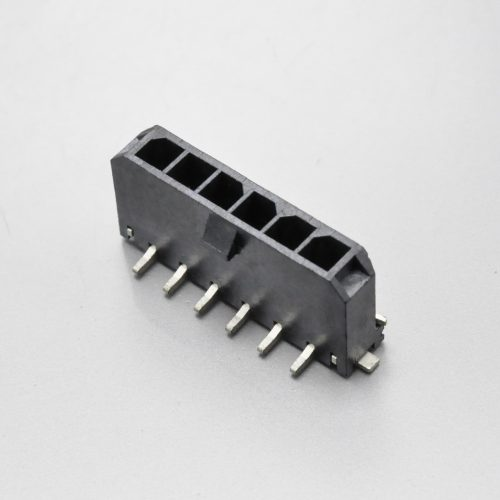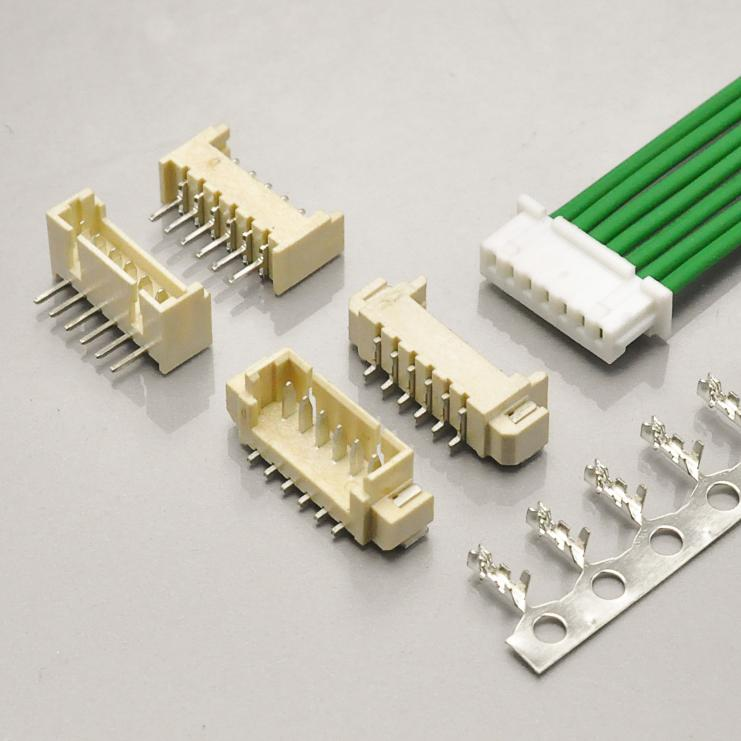The grounding plate (or grounding pad) in the electronic connector is a key component designed to improve electrical contact and reduce interference. The following is a professional analysis of the grounding plate and a detailed introduction to its application scenarios:
1. Definition of Ground Lug
A grounding plate is an additional metal sheet or conductive material, usually located inside or outside a connector, used to provide a reliable electrical ground connection. Its main function is to connect the connector housing or other related components to the system ground to ensure stable electrical performance and reduce electromagnetic interference (EMI).

KR1250 Series Picoblade Electrical Wire Connector Types
2. The role of grounding lugs
- Electrical Grounding: The primary purpose of a grounding strap is to provide a stable electrical ground path. This can help ensure that current flows smoothly through the circuit, prevent static electricity buildup, and reduce possible electrical noise interference with other circuit components.
- Reduce electromagnetic interference (EMI): In high-frequency or high-speed signal transmission, electromagnetic interference may cause signal distortion or interfere with other circuits. The ground plate effectively reduces noise and interference and improves signal integrity by providing a low-impedance ground path.
- Improved mechanical stability: The grounding strap can also enhance the mechanical stability of the connector. By firmly connecting the connector to the metal housing of the device, the grounding strap can provide additional support and reduce the shaking or displacement of the connector during use.
- Heat dissipation: In some applications, the grounding lug can also help dissipate heat. By making good contact with the device’s housing, the grounding lug can help dissipate the generated heat away from the connector and surrounding components.
3. Common scenarios for connectors with grounding plates
- Communication equipment: In high-frequency communication equipment, such as wireless communication base stations, satellite communication equipment, etc., grounding sheets are used to ensure the stability of signal transmission and reduce interference. These devices often require high data transfer rates and reliability, so ground straps are particularly important in these applications.
- Industrial Automation: In industrial automation systems, ground lugs are used to reduce signal errors or equipment failures due to interference between equipment. Connectors in such systems often need to withstand vibration and electromagnetic interference, so the use of grounding lugs can significantly improve the stability and reliability of the system.
- Automotive electronics: Electronic connectors used in automobiles (such as engine control units, in-car entertainment systems, etc.) often contain grounding lugs to ensure the stability of the electrical system and reduce electromagnetic interference. Grounding strips can ensure the normal operation of vehicle electronic equipment in high-noise environments.
- Medical equipment: Medical equipment requires high precision and reliability, so grounding strips are used to reduce electrical noise and ensure accurate operation of the equipment. Grounding strips can also improve the safety of the equipment and prevent the impact of static electricity on sensitive medical instruments.
- Consumer electronics: In some high-end consumer electronics products (such as advanced audio, computer peripherals, etc.), ground plates are used to reduce noise and improve signal quality, thereby enhancing user experience and device performance.

KR3000 Series Micro Fit 3.0 Wire to Board Connector










